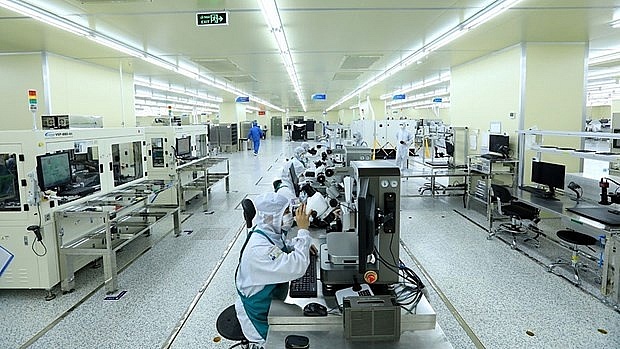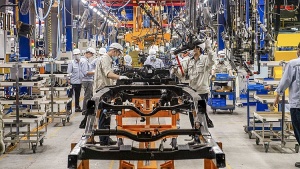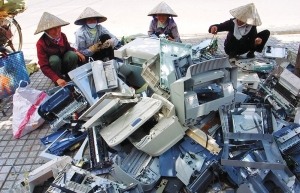Local manufacturers display concern over high capital costs
In the third quarter, the growth rate of added value in Vietnam’s industry is projected to have reached 4.57 per cent, compared to over 11 per cent in the same period last year, according to the General Statistics Office (GSO).
 |
| Local manufacturers display concern over high capital costs, illustration photo/ Photo VNA |
In the first nine months of the year, the added value of the industrial sector increased 1.65 per cent on-year.
Phi Thi Huong Nga, director of the GSO’s Department of Industrial Statistics and Construction, stated that the industrial sector’s value-added industrial growth rate has increased every month since May, with every rise being greater than the previous one.
“Industrial manufacturing throughout the remaining months of this year keeps on growing but has not yet returned to high growth momentum,” Nga explained.
She stated the results of a GSO Q3 survey on 50,000 manufacturing and processing businesses’ performance, which revealed that about 37.5 per cent of the surveyed firms said their performance was stable. For the latter months of the year, around 40 per cent of respondents believe that their situation will improve, while 37 per cent hold that their situation will be kept stable. Some 23.7 per cent of businesses anticipate more difficulties.
“The fact that less than one-quarter of businesses foresee a worsening situation demonstrates that business sentiment is extremely upbeat,” Nga said.
Vietnam’s index of industrial production for the third quarter rose by 12.12 per cent over the same period last year, but industrial enterprise profits remained unchanged.
While some of the data indicates a recovery in the industrial sector, enterprise production and business activities are still weak, and many require capital to invest and produce.
In the first half of the year, THACO Group reported a profit after tax of $44 million, which is less than a quarter of the same period in 2022, bringing profits down nearly five times to 2.1 per cent. The information was disclosed by THACO in a quarterly financial report sent to the Hanoi Stock Exchange at the end of September.
Due to low market demand, THACO’s primary operation – the sale of automobiles – is declining. According to the Vietnam Automobile Manufacturers Association, THACO sold about 58,000 vehicles in the first eight months of 2023, a decrease of 40 per cent compared to the same period in 2022. Thus, after eight months, the group has only achieved under half of its sales target of over 120,000 vehicles, which is equivalent to nearly $3.8 billion.
The steel industry, meanwhile, is in a recession, with Hoa Phat Group’s business plan being less precise. According to amended business results published in July, the group’s net profit at the conclusion of the first half of this year was only $75 million, down 85 per cent on-year.
Hoa Phat anticipates a profit after tax of $327 million in 2023, a decline of over 5 per cent compared to its profit in 2022.
Hoa Phat is rapidly transitioning to high-quality steel production, making substantial investments to produce manufactured steel for the shipbuilding, automotive, and fastener industries, which serve domestic and international markets.
At a meeting in the second quarter of 2023, Tran Dinh Long, chairman of Hoa Phat, stated that it needs a substantial amount of capital to focus on the Hoa Phat Dung Quat 2 iron and steel production complex.
Australia’s ore and coal mines have been temporarily suspended to concentrate on the $3 billion Dung Quat 2 project. Long believes that when the complex begins operations in 2024 or early 2025, Hoa Phat’s revenue will rise by $3.3-4.1 billion.
Plenty of small industrial manufacturing enterprises will also face a capital shortage in 2024 in order to maintain production and business activities, prepare materials for new orders, and maintain employment for their employees.
Tran Quoc Toan, director of Danang Technical Equipment Co., Ltd., a manufacturer of ship equipment, stated that interest rates remain elevated at 11-12 per cent, driving up capital costs, impacting product prices, and lowering business profits.
“Due to high capital costs, our plan to expand into the Cambodian market had to be put on hold. Due to high costs and the market’s current pessimism, we cannot predict when to continue with this plan,” said Toan.
 | Manufacturers feel the heat through erratic power cuts A series of power cuts without specific schedule or durations has impacted the production and export activities of local manufacturers. |
 | Vietnamese manufacturers show signs of stabilisation amidst market slowdown The Vietnamese manufacturing sector remains in contraction but has shown some signs of stabilisation, with slower reductions in output, new orders, and employment. |
 | Production costs at risk with draft recycling rules Local manufacturers have suggested that authorised agencies should consider a more appropriate level of recycling costs to reduce business expenses. |
What the stars mean:
★ Poor ★ ★ Promising ★★★ Good ★★★★ Very good ★★★★★ Exceptional
Related Contents
Latest News
More News
- Businesses ramp up production as year-end orders surge (December 30, 2025 | 10:05)
- Vietjet chairwoman awarded Labour Hero title (December 29, 2025 | 13:06)
- How to unlock ESG value through green innovation (December 29, 2025 | 10:03)
- AI reshapes media and advertising industry (December 29, 2025 | 08:33)
- FPT and GELEX sign deal to develop blockchain tech for global markets (December 29, 2025 | 08:29)
- Vietnam’s GDP forecast to grow by 9 per cent in 2026 (December 29, 2025 | 08:29)
- Women entrepreneurs are key to Vietnam’s economic growth (December 29, 2025 | 08:00)
- Vietnam's top 500 value-creating enterprises announced (December 27, 2025 | 08:00)
- The PAN Group shaping a better future with ESG strategy (December 26, 2025 | 09:00)
- Masan Consumer officially lists on HSX, marking the next phase of value creation (December 25, 2025 | 13:20)

 Tag:
Tag:


















 Mobile Version
Mobile Version